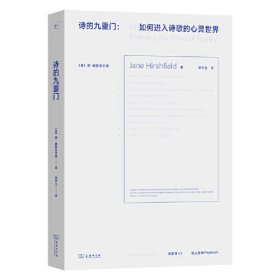
计算材料学案例教程(普通高等教育十四五规划教材)(英文版)
全新正版未拆封
¥ 15.58 全新
仅1件
湖南长沙
认证卖家担保交易快速发货售后保障
作者汤富领、李俊琛、卢学峰 编
出版社冶金工业出版社
出版时间2022-10
版次1
装帧平装
上书时间2024-03-18
- 在售商品 暂无
- 平均发货时间 30小时
- 好评率 暂无
- 最新上架
商品详情
- 品相描述:全新
图书标准信息
- 作者 汤富领、李俊琛、卢学峰 编
- 出版社 冶金工业出版社
- 出版时间 2022-10
- 版次 1
- ISBN 9787502491437
- 定价 39.00元
- 装帧 平装
- 开本 16开
- 页数 164页
- 字数 266.000千字
- 正文语种 英语
- 【内容简介】
-
本书以案例方式介绍了如何用材料计算软件考察材料的成分、结构变化对材料性质或器件性能的影响。全书详细介绍了原子模拟、分子动力学、蒙特卡洛计算、第一性原理计算和有限元计算等方法,应用GULP、LAMMPS、ATAT、VASP、CASTEP和ANSYS等常用计算软件,针对某些特定金属、半导体和绝缘体等体系,考察它们的表面、界面和纳米结构乃至器件的力学、热学、光学和电学性质。
本书可作为材料科学与工程专业的本科生和研究生教材,也可供计算物理、计算化学等领域的研究者及工程技术人员参考。 - 【目录】
-
1 Thermal properties of high-k Hf1-xSixO2
1.1 Introduction
1.2 Interatomic potentials
1.3 Modeling and computing method
1.3.1 Buitding the model
1.3.2 Input files
1.3.3 Output files
1.4 Results and discussion
1.4.1 Latrice constants
1.4.2 Bond length and bond angle
1.4.3 Elastic modulus
1.4.4 Specific heat
1.4.5 Coefficient of thermal expansion
1.4.6 Phonon density of states and Debye temperature
1.5 Discussion in materialism dialectical thinking
Questions
References
2 Molecular dynamics for mechanical properties of BN sheets
2.1 Introduction
2.2 Modeling and computing method
2.2.1 Build the model
2.2.2 Input files
2.2.3 Output files
2.3 ComputationaI details
2.4 Results and discussion of indentation
2.5 Results and discussion of shear
2.5.1 Effect of extreme strain rate on shear mechanical property of the 3-Si3N4 thin layer
2.5.2 Effect of loading temperature on shear mechanical property of the 3-Si3N4 thin layer
2.6 Discussion in materialism dialecticaI thinking
Questions
References
3 Monte Carlo simulation of solar cell materials
3.1 Introduction
3.2 Modeling and computing method
3.2.1 Cluster expansion Monte Carlo Simulations based on first-principles calculations
3.2.2 Determination of inhomogeneity degree σ of In-A1 distributions in CIAS alloys
3.2.3 MAPS code input files
3.2.4 Output of MAPS
3.2.5 Input of Monte Cado simulations
3.2.6 Output of Monte Carlo simulations
3.3 Results and discussion of CulnSe2-CuAISe2 pseudobinaary alloys
3.3.1 Optimized structure of terminal phases
3.3.2 Formation energies and effective cluster interactions
3.3.3 Spatial distribution morphology of In-Al atoms in CIAS alloys
3.3.4 Inhomogeneity degree of CIAS alloys
3.4 Results and discussion of CulnSe2-CulnS2 pseudobinary system
3.4.1 Effective cluster interactions and ground-state structures
3.4.2 Phase diagram
3.5 Reflection in materialism dialectical thinking
Questions
References
4 Can simple substances show non-zero valence?
4.1 Introduction
4.2 Modeling and computing method
4.2.1 Building the graphene model
4.2.2 Building carbon atom chain model
4.2.3 Mulliken charge calculation
4.2.4 Output files
4.3 Results and discussion for carbon
4.3.1 Zero-dimensional carbon
4.3.2 0Be-dimensional cardon
4.3.3 Two-dimensional carbon
4.3.4 Three-dimensional carbon
4.4 Charge distribution of other simple substances
4.5 Discussion in materialism dialecticaI thinking
Questions
References
5 Surface adsorption simulation of some energy materials
5.1 Introduction
5.2 Modeling and computing method
5.2.1 Build the Lithium―sulfur battery model
5.2.2 Build the surface model
5.2.3 Build the adsorption model
5.2.4 Input flies
5.2.5 Output files
5.3 Computational details
5.3.1 Calculate the total energy of the total adsorption model system
5.3.2 Adsorption energy
5.3.3 Density of states calculation
5.3.4 Bader charge calculation
5.3.5 Differential charge
5.4 Results and discussion of P2Ss-adsorbed Li2S surface
5.4.1 Properties of P2S5 and Li2S(110)bulk
5.4.2 Naked Li,S(100)surface
5.4.3 Properties of P2S5-adsorbed Li2S(100)surface
5.4.4 Structure parameters of adsorbed P2S5
5.4.5 Adsorption energy of P2S5
5.4.6 DOS analysis of P2S5 adsorption
5.5 Results and discussion of PCBM-adsorbed MAPbl。surface
5.5.1 PCBM.adsorbed MAPbI,surface
5.5.2 Clean MAPbl,(100)surface
5.5.3 PCBM.adsorbed MAPbI,surface
5.5.4 Structure of PCBM.adsorbed surface
5.5.5 Adsorption energy of PCBM on MAPbl3 surface
5.5.6 Electronic properties of PCBM-adsorbed MAPbl3 surface model
5.5.7 Optical absorption propertie
点击展开
点击收起
— 没有更多了 —












以下为对购买帮助不大的评价